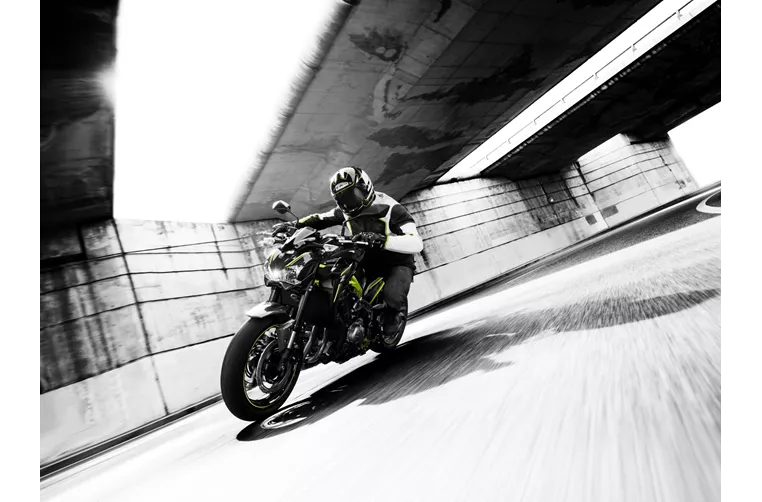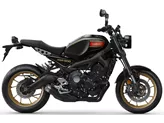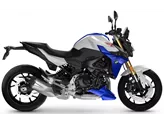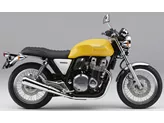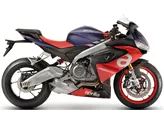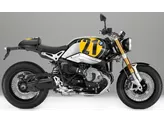Kawasaki Z900 2018 vs. Kawasaki Z900 RS 2018

Kawasaki Z900 2018

Kawasaki Z900 RS 2018
Overview - Kawasaki Z900 2018 vs Kawasaki Z900 RS 2018
The Kawasaki Z900 2018 is a naked bike that boasts a powerful and silky engine with an engine power of 125.4 HP and a torque of 98.6 Nm. It is equipped with a fuel injection system and features a liquid cooling system. The bike has a displacement of 948 ccm and is powered by a 4-cylinder engine.
In terms of suspension, the Z900 2018 is equipped with an Upside-Down telescopic fork in the front, which can be adjusted for preload and rebound. The rear suspension consists of a swing arm with a monoshock, also adjustable for preload and rebound. The rear suspension is made of aluminum. The frame of the bike is made of steel and has a double cradle design.
The braking system of the Z900 2018 includes double disk brakes in the front with a diameter of 300 mm and four pistons. The bike is also equipped with ABS for advanced rider assistance.
In terms of dimensions and weights, the front tire has a width of 120 mm and a diameter of 17 inches, while the rear tire has a width of 180 mm and a diameter of 17 inches. The wheelbase of the bike is 1450 mm and the seat height is 795 mm. The kerb weight of the Z900 2018 with ABS is 210 kg.
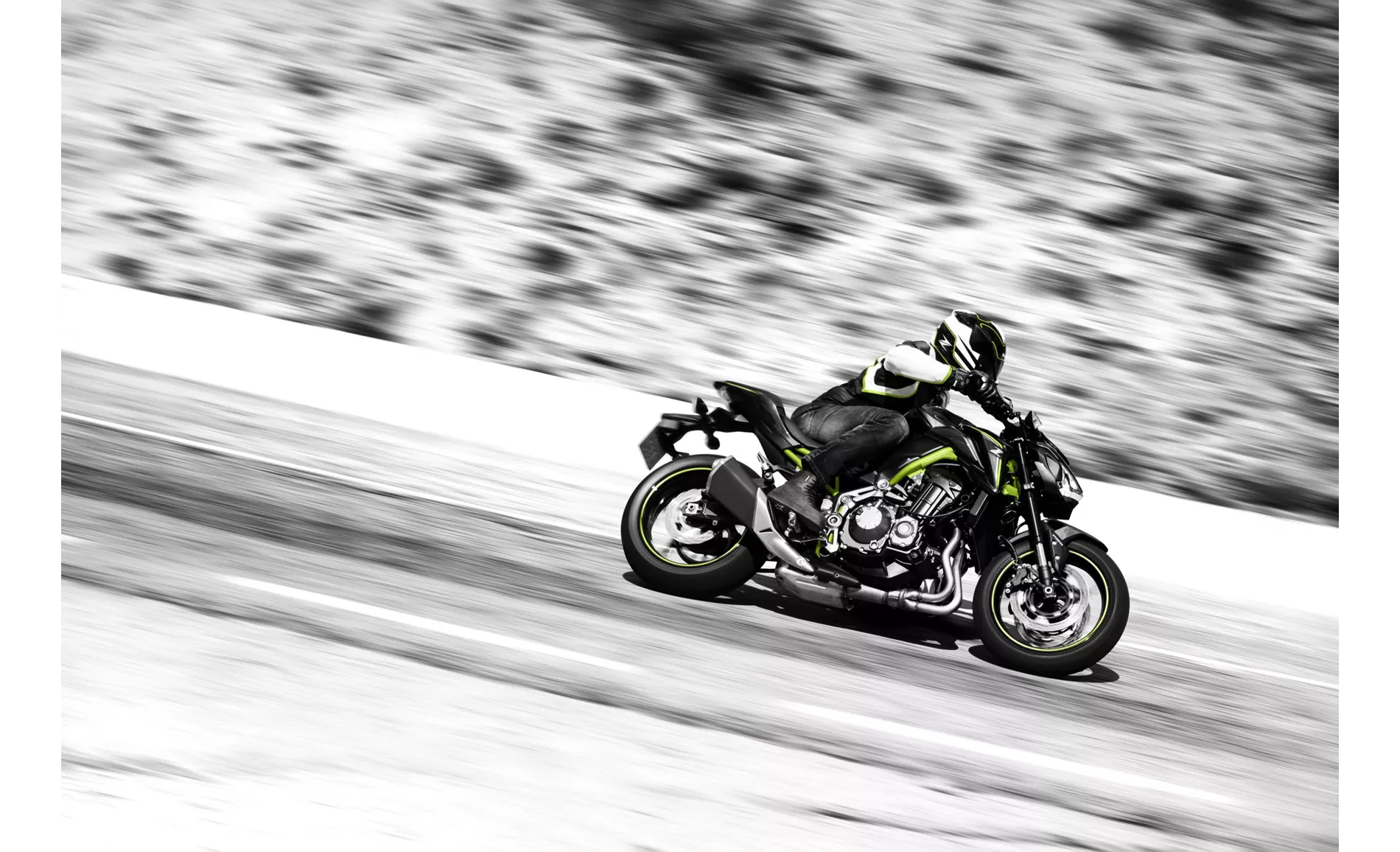
Kawasaki Z900 2018
The Kawasaki Z900 RS 2018, on the other hand, also features an in-line engine with a displacement of 948 ccm. It has an engine power of 111 HP and a torque of 98.6 Nm, similar to the Z900 2018. The fuel system is also injection-based and the cooling system is liquid.
In terms of suspension, the Z900 RS 2018 is equipped with an Upside-Down telescopic fork in the front, which can be adjusted for compression, preload, and rebound. The rear suspension consists of a swing arm with a monoshock, also adjustable for preload and rebound. The rear suspension is made of aluminum. The frame of the bike is made of steel and has a tubular design.
The braking system of the Z900 RS 2018 includes double disk brakes in the front with a diameter of 300 mm and four pistons. Similar to the Z900 2018, it is equipped with ABS for advanced rider assistance. However, the Z900 RS 2018 also features additional rider assistance systems such as ride by wire and traction control.

Kawasaki Z900 RS 2018
In terms of dimensions and weights, the Z900 RS 2018 has the same tire specifications as the Z900 2018, with a front tire width of 120 mm and a diameter of 17 inches, and a rear tire width of 180 mm and a diameter of 17 inches. The wheelbase of the bike is slightly longer at 1470 mm, and the seat height is higher at 835 mm. The kerb weight of the Z900 RS 2018 with ABS is 215 kg.
In terms of strengths, both bikes have powerful and smooth engines. They also have great looks, with the Z900 2018 having a sharp and sporty look, while the Z900 RS 2018 has a retro design. The Z900 2018 has a low seating position, making it easy to handle and maneuver, while the Z900 RS 2018 offers a comfortable seating position and balanced handling.
However, the Z900 2018 has some weaknesses, such as the lack of traction control and a knee angle that can be strenuous for tall riders on long rides. On the other hand, the Z900 RS 2018 lacks a shift assistant and is heavier compared to other retro bikes in its class. The seat of the Z900 RS 2018 is also criticized for being a little too soft on long tours, and it lacks wind protection.
Overall, both the Kawasaki Z900 2018 and the Kawasaki Z900 RS 2018 are powerful and stylish bikes with their own strengths and weaknesses. The Z900 2018 is more focused on sporty performance, while the Z900 RS 2018 offers a more comfortable and retro riding experience.
Technical Specifications Kawasaki Z900 2018 compared to Kawasaki Z900 RS 2018
Pros and Cons in comparison
Pros and Cons in comparison
Kawasaki Z900 2018
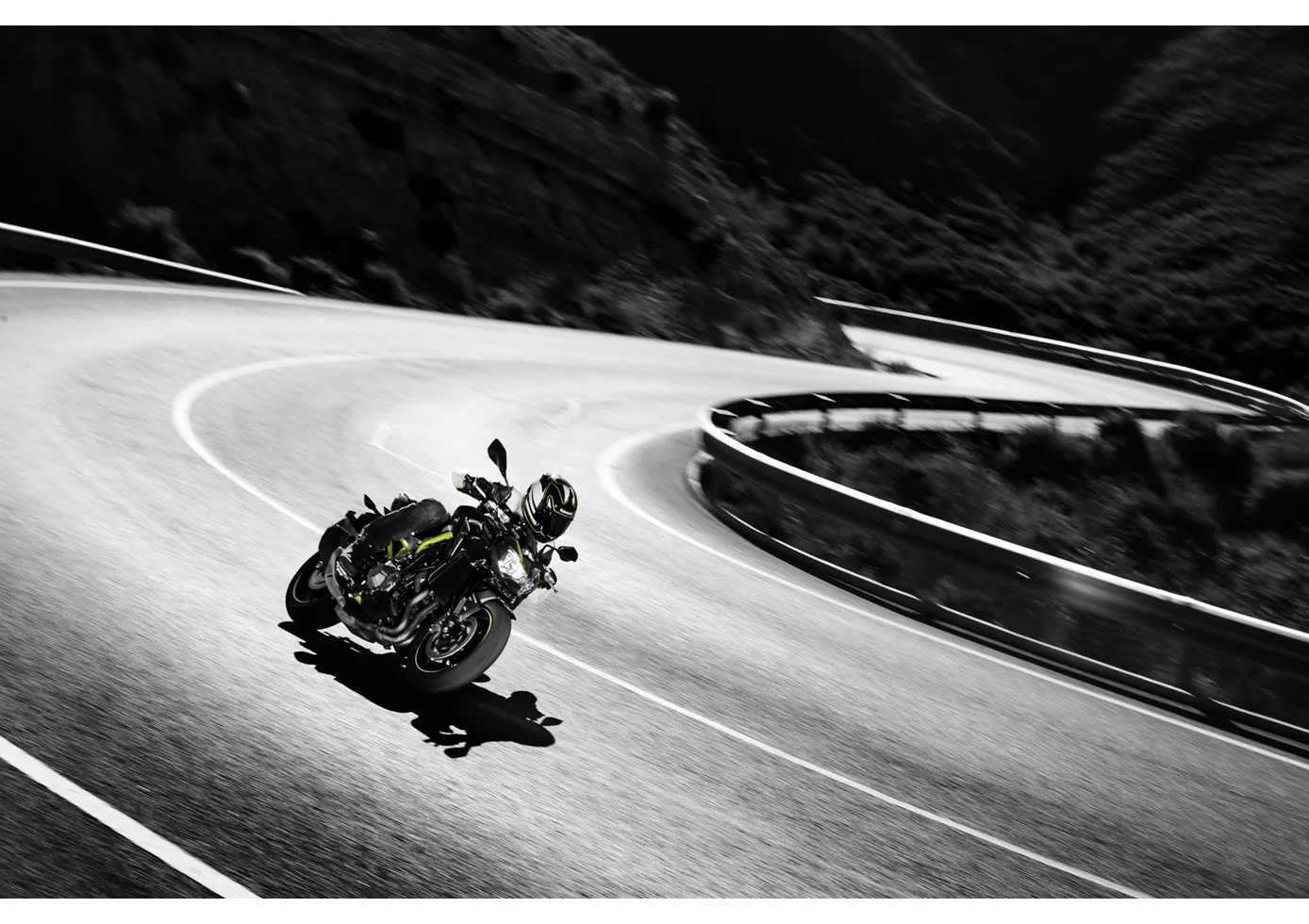
In the hotly contested naked bike segment, the Z900 plays right at the front. Above all, its engine is absolutely terrific, runs incredibly silky and offers rich power in all rev regions - as befits a Japanese four-cylinder. Its sporty, aggressive appearance matches this. It does without electronic bells and whistles, but still conveys a lot of confidence when chasing corners, braking and accelerating out of them. The low seat is especially beneficial for smaller riders, but taller riders might miss a flatter knee angle on long distances. The low weight and compactness make the Z900 particularly agile and easy to handle. A sporting cannon that is also extremely appealing in terms of price
Kawasaki Z900 RS 2018

Its four-cylinder is silky smooth while delivering enough power to make you grin under your helmet. It is also very easy to move, which should make it a great commuter bike in everyday life and serve as an iconic fun bike at the weekend. The looks find the perfect straddle of classic design and modern details to form a coherent retro package that is also a worthy tribute to Kawasaki history. It's a great naked bike with a snazzy look.
Price Comparison Avarage Market Price Kawasaki Z900 vs Kawasaki Z900 RS
There are a few key differences between a Kawasaki Z900 2018 and a Kawasaki Z900 RS 2018. In terms of price, the actual average price of a Kawasaki Z900 RS 2018 is about 37% higher. A Kawasaki Z900 2018 experiences a loss of 650 GBP in one year and 530 GBP in two years of ownership. This is offset by a loss of 910 GBP and 1,080 GBP for a Kawasaki Z900 RS 2018. Compared to Kawasaki Z900 RS 2018 there are more Kawasaki Z900 2018 bikes available on the 1000PS.de Marketplace, specifically 55 compared to 28. It takes less time to sell a Kawasaki Z900 with 112 days compared to 154 days for a Kawasaki Z900 RS. Since model year 2017 1000PS.de editors have written 46 reviews for the Kawasaki Z900 and 26 reviews for the Kawasaki Z900 RS since model year 2018. The first review for the Kawasaki Z900 was published on 11/11/2016 and now has more than 93,200 views. This compares to more than 63,700 views for the first review on Kawasaki Z900 RS published on 06/09/2017.
